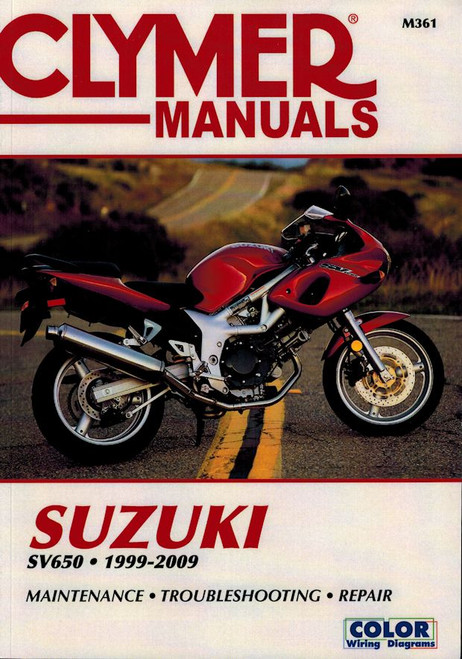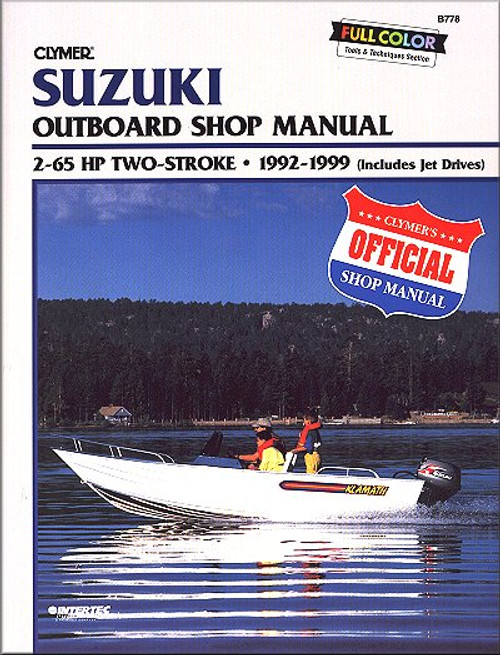The 1999-2013 Suzuki GSX1300R Hayabusa repair manual by Haynes covers the following sportbike models:
- 1999-2007 Suzuki GSX1300R X,Y, K1, K2, K3, K4, K5, K6 - 1299cc
- 2008-2009 Suzuki GSX1300R K8, K9 - 1340cc
- 2010-2012 Suzuki GSX1300R L0, L1, L2 - 1340cc
- 2013 Suzuki GSX1300R LA3 - 1340cc
You can trust the expertise and authority of all repair, service and maintenance procedures outlined in this Haynes 4184 - Suzuki GSX 1300 R Service & Repair Manual. Your DIY project is in good hands with the help of this manual in your toolbox. Each Haynes repair manual is based on a complete teardown and rebuild. The step by step procedures are augmented with detailed photography to enhance clarity of the specific repair / service task.
The Motor Bookstore is your one stop shop for all repair and service DIY literature. We ship fast and answer our phones. We have been servicing DIY mechanics over the internet since 1997.
Book Excerpt: 1999-2013 Suzuki GSXR1300R Hayabusa Repair Manual THROTTLE CABLES
REMOVAL
- Raise the fuel tank (see Section 2).
- Fully loosen the locknuts securing the throttle cable adjusters in the bracket, then if necessary thread the adjusters out until the captive nuts can be freed (see illustration). Slip the cables out of the bracket and detach the ends from the throttle pulley, noting how they fit - the lower cable is the throttle opening cable, the upper cable is the throttle closing cable (see illustration).
- Undo the screw securing the front (opening) cable retaining plate to the handlebar switch/throttle twistgrip housing, and unscrew the rear (closing) cable retaining ring (see illustration). Note how the pin on the upper half of the housing locates in the hole in the handlebar. Detach the cable ends from the twistgrip pulley, noting how they fit, then pull the cables out of the lower half of the housing (see illustration).
- Remove the cables from the machine, noting their correct routing, and how they pass through the guide on the frame - slacken the bolt is required to help removal, or unscrew the bolt and remove the guide altogether.
ELECTRICAL SYSTEM
SIDESTAND SWITCH AND RELAY
- The sidestand switch is mounted on the sidestand bracket. The switch is part of the safety circuit which prevents or stops the engine running if the transmission is in gear while the sidestand is down, and prevents the engine from starting if the transmission is in gear unless the sidestand is up and the clutch lever is pulled in.
- To access the wiring connector, remove the left-hand fairing side panel (see Chapter 8). Trace the wiring from the switch and disconnect it at the connector (see illustration).
- Check the operation of the switch using a multimeter set to the diode testing function - make sure the multimeter batteries are good. Connect the positive (+) probe to the green wire terminal on the switch side of the connector and the negative (-) probe to the black/white wire terminal. With the sidestand up there should be 0.4 to 0.6 volts; with the stand down there should be 1.4 to 1.5 volts (but note that this figure may vary according to the voltage of the meter you are using - the voltage given is the output voltage of the meter used Suzuki, Pt. No. 09900-25008).
- If the switch does not perform as expected, check that the fault is not caused by a sticking switch plunger due to the ingress of road dirt; spray the switch with a water dispersant aerosol. If the switch still does not work it is defective and must be replaced with a new one.
Subject: 1999, 2000, 2001, 2002, 2003, 2004, 2005, 2006, 2007, 2008, 2009, 2010, 2011, 2012, 2013 Suzuki GSX1300R Hayabusa service, maintenance, repair procedures. UPC: 699414004539 ISBN-10: 0857336827 | ISBN-13: 9780857336828 | Haynes 4184
1. LIVING WITH YOUR SUZUKI HAYABUSA 2. Introduction
Suzuki — Every which way | Acknowledgements | About this manual | Identification numbers | Buying spare parts | Safety first! 3. Daily (pre-ride checks)
Engine/transmission oil level | Brake fluid levels | Clutch fluid level | Tires | Suspension, steering and drive chain | Legal and safety checks | Bike specs | Model development 4. MAINTENANCE 5. Routine maintenance and servicing
Specifications | Recommended lubricants and fluids | Maintenance schedule | Component locations | Maintenance procedures 6. REPAIR and OVERHAUL 7. Engine, transmission and associated systems
Engine, clutch and transmission | Cooling system | Fuel and exhaust systems | Ignition system 8. Chassis components
Frame, suspension and final drive | Brakes, wheels and tires | Bodywork 9. Electrical system 10. Wiring diagrams 11. REFERENCE
Tools and workshop tips | Security | Lubricants and fluids | Conversion factors | MOT test checks | Storage | Fault finding | Fault finding equipment











